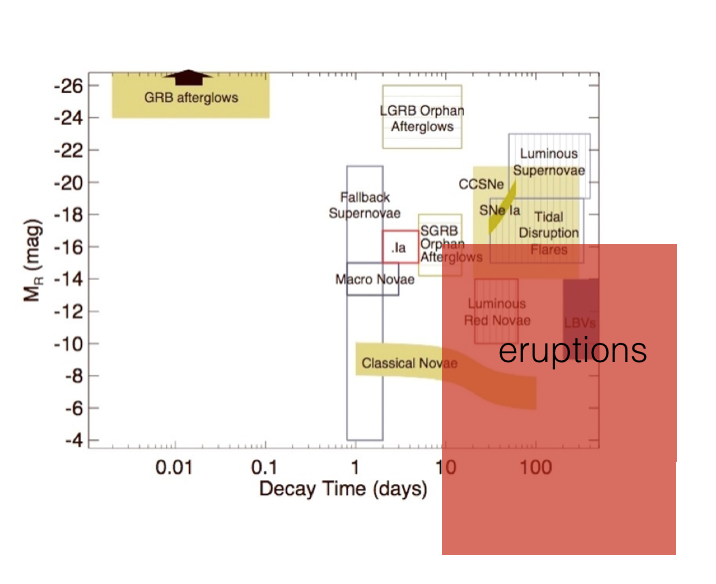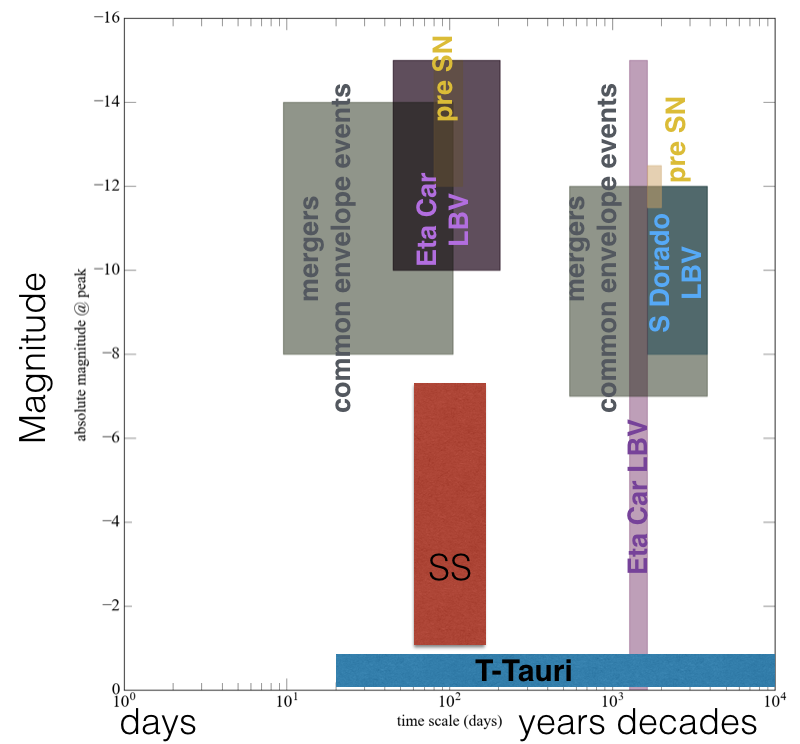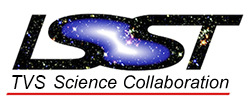Non-degenerate Eruptive Variables
Members
Members that collaborated to generate this roadmap:
Federica Bianco (NYU, fb55@nyu.edu), Howard Bond, David Cieza, Nathan Smith
Primary subgroup contact:
Rosaria (Sara) Bonito (INAF - Observatory of Palermo, sbonito@astropa.unipa.it)
Subgroup MAF engineer:
to be appointed
Subgroup Primary members
- Howard Bond - Penn State/STScI
- David Cieza- Chile
- Nathan Smith - University of Arizona
- Simone Antoniucci - INAF/Observatory of Rome, Italy
- Teresa Giannini - INAF/Observatory of Rome, Italy
- Lucas Cieza - University of Texas at Austin
- Julie Lutz - University of Washington
- Elena Mason - INAF/Observatory of Trieste, Italy
- Jorick Vink - Armagh Observatory
Subgroup Secondary members
- David Arnett - University of Arizona
- Federica Bianco - New York University
- Geoffrey Clayton - Lousiana State University
- Kemm Cook - NOAO
- Knox Long - Space Telescope Science Institute
- Allistair Walker - Cerro Tololo Inter-
American Observatory - Yongzhi Cai - INAF/Padova Observatory, Italy and Department of Physics and Astronomy, University of Padova, Italy
- Maria Drout - Carnegie Observatories
- Alessio Marino - Sapieza University of Rome, Italy
- Ronald Mennickent - Universidad de Concepción, Chile
- Andrea Pastorello - INAF/Padova Observatory, Italy
- Pavlos Protopapas - Istitute for Applied Computational Science at Harvard University
- Alexandre Roman-Lopez - Department of Physics & Astronomy Universidad de La Serena, Chile
- Przemek Wozniak - Los Alamos National Laboratory
These events are slowly evolving and bright. Thus they are relatively insensitive to cadence choices: all time scales are longer than days, all magnitudes bright enough to detect events within ~100Mpc. Relate color rather than spectra to physical parameters as we will have the chance to detect many of these transients too faint for spectroscopic followup: prediction on times scales and colors for example that can separate wind driven events from hydrodynamical mechanisms. two main families of NDET are identified: Massive Stars, T-Tauri Stars. LBVs - normal S Dor eruptions: MASSIVE STARS LBVs - giant eruptions like Eta Car ILOTs mergers and violent common envelope events Chaotic eruptions T-Tauri STARS Fu Ori variables Ex Or variables A theoretical framework is in place to interpret these data. However, theoretical work is needed to Understand if all T Tauri stars undergo FU Ori and Exor outburst during their formation. This can be donw with a statistically large sample. Then the following questions can be answered: Spectroscopic follow up will be needed to accomplish this, thus LSST colors are helpful, but not needed from LSST directly. The main contribution of LSST will be finding the sources and the statistical analysis.The targets should be bright enough for followup from Chile with multi-wavelengths photometry, spectroscopy, and even take high-resolution images of the systems in the optical/near-IR (with VLT, Gemin, ELTs) and the (sub)millimeter (with ALMA). Additional phenomena: What is the roadmap between now anf the beginning of the LSST observations? Discovery of these unobserved events should be enabled. They have been predicted theoretically but not observed yet. Semi-periodic high intensity fluctuations. More predictions are needed (mostly predictions have been done for Betelgeuse) Arnett & Meakin 2011 ApJ...741...33A, Arnett, Meakin & Viallet 2014 2014AIPA....4d1010A LSST willprovide a statistical sample: they are diverse and rare. We really do not know what they are. Theoretical development, falsifiable predictions are needed. Can we discovery of Extrasolar KBs? Time scales are long, years for follow up: Bear+Soker 16 but this requires NIR follow up. Roadmap: Identify facilities that can do that, detection limits, relevant bands. ROADMAP OUTLINE
Model observables according to different physical parameters (e.g. Arnett & Meakin 2011, Smith 2014)
Table of Non-degenerate eruptive transients (NDET):


LSST can pursue the following scientific goals:
Massive star NDEV:
Get complete statistics on LBVs: The rate of LBV is uncertain, due to their faintness. (absolute mag -8 to -15). They appear fainter with expected local extinction?
That is easy with nearly any proposed cadence: the events last >10 days so each event will be discovered and sampled with at least a few points.
Relate massive starseruptions to SN precursors. Get statistics on precursor timeline and mass loss. This is really easy to accomplish with LSST: we will have a history of sky position for all SN and precursors are generally >10 days, so at least sampled by a few points.
We generally use spectroscopic follow-up to distinguish different physical mechanisms and reduce the assumptions in deriving ejecta masses. Theoretical or data-driven work is needed to understand how much of this information can be extracted from colors.
T-Tauri NDEV
Mergers, Violent Common envelope events
Chaotic Eruptions
ILOTS
